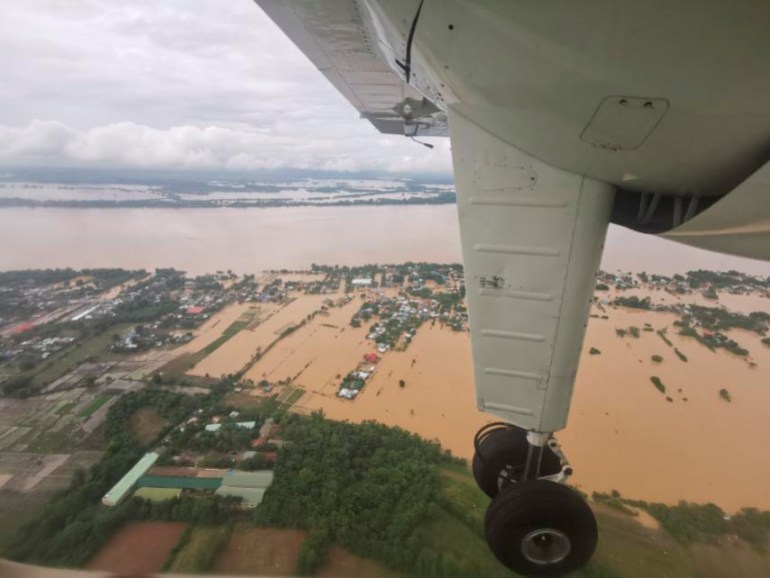Philippines scrambles to rescue thousands from typhoon flooding
Towns and villages in Cagayan Valley in the country’s northeast were submerged following Typhoon Vamco.

Philippine coastguard and disaster agencies scrambled on Saturday to rescue thousands of people in a northern province flooded by Typhoon Vamco, the which left at least 42 people dead after sweeping across the country on Wednesday night.
Dozens of towns in the Cagayan region northeast of the capital Manila remain submerged, affecting thousands of families, some of whom fled to rooftops to escape two-storey high floods, officials said.
Keep reading
list of 4 itemsAt least 20 killed as Typhoon Goni batters Philippines
Tropical Storm Saudel lashes Philippines, heads for Vietnam
‘Catastrophic floods’: 105 killed, 5 million affected in Vietnam
The coastguard sent teams of rescue personnel, vehicles and rubber boats to Tuguegarao early on Saturday, and will bring in more help from nearby provinces, said coastguard commandant George Ursabia.
Richard Gordon, the chairman of the Philippines’ Red Cross, said the organisation had also deployed rescue teams to the area, while volunteers on the ground in Cagayan were providing hot meals and assistance to people forced out of their homes by the floods.
The accumulated effect of successive storms – Vamco was the Philippines 21st typhoon this year – as well as water from a dam and higher plains increased flooding in Cagayan province, the disaster agency said. The nearby Magat Dam released water on Friday equivalent to two Olympic-size pools per second, government data showed.
Meanwhile, our Cagayan Chapter volunteers and staff have already started distributing hotmeals to the evacuees. pic.twitter.com/h6wr9AyDgs
— Richard J. Gordon (@DickGordonDG) November 14, 2020
The Cagayan Valley is a region of 1.2 million people and is largely agricultural. Nearly 14,000 people have already moved to evacuation centres because of the floods, the disaster agency said.
“We believe it would take more than a week before the floods subside” if there is no further rain, Tuguegarao City Mayor Jefferson Soriano told the DZMM radio station. The city, home to 163,000 people, was cut off because the roads were flooded, he said.
Residents took to social media, posting photos and addresses with pleas for rescue. The hashtag #CagayanNeedsHelp was the top trending topic on Twitter with 2.03 million tweets.
“We’re already on the third day atop our roof. We need relief goods and clothing because we saved nothing,” Ramilo Lagundi, a resident in Tuguegarao City, told the radio station DZBB. Lagundi said he was staying with hundreds of other neighbours on rooftops.


Vamco made landfall in the Philippines as communities were still trying to clean up from Typhoon Goni, the most powerful storm in the world this year.
Authorities have also warned that evacuation centres could help accelerate the spread of coronavirus. There is a “very strong possibility” that local COVID-19 cases could rise as a result of overcrowding, the Department of Health warned on Saturday.
The typhoon is now nearing Vietnam where millions of people in the country’s central provinces are bracing themselves for further floods and landslides.
Vamco is the 13th big storm to hit the country this year.
“There has been no respite for more than eight million people living in central Vietnam,” said Viet Nam Red Cross Society President Nguyen Thi Xuan Thu. “Each time they start rebuilding their lives and livelihoods, they are pummelled by yet another storm. This is heartbreaking for even the most resilient communities.
“Our greatest concerns are for the elderly and poor, as well as families whose homes have been destroyed or damaged and who now face this latest storm while living in temporary shelters or crowded in with relatives.”
More than 400,000 homes have been damaged or destroyed by the storms that have hit the central provinces during the past six weeks, according to the Red Cross. Roads and bridges have been washed away, power supplies disrupted, and crops destroyed, leaving at least 150,000 people at immediate risk of food shortages, it said in a statement.